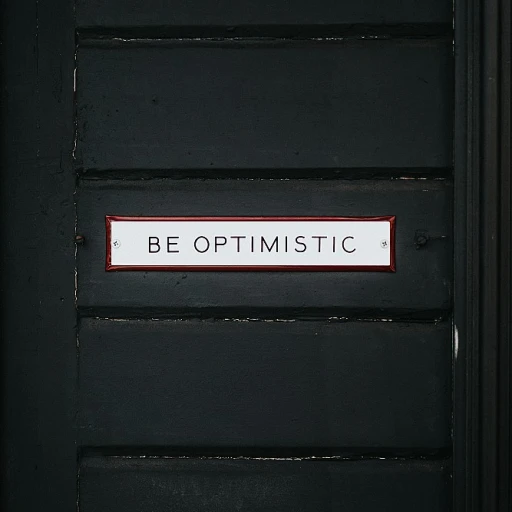
Understanding Big Data in HR
What is Big Data in HR Actually About?
Big data in human resources, huh? It's like the secret sauce every HR professional craves to understand. So, let's break it down into more digestible chunks. No more buzzwords, just pure insights. Big data means collecting massive amounts of information—be it from employee behavior, performance management metrics, or talent acquisition strategies—and then analyzing that info to make smarter business decisions. See, when you think about employee data, it's not just about who does what job or how much they earn. It involves digging deep into various data points such as employee engagement levels, turnover rates, recruitment patterns, and even data-driven insights from tools like predictive analytics. These analytics tools aren't just for show; they offer the kind of performance management metrics that can revolutionize human resource strategies.Data-Driven Decision Making: A New Mindset
Recruitment and resource management are no longer a guessing game. In the past, human resource management involved a lot of trial and error. But with analytics big, companies can make those important hiring and training decisions more efficiently. Welcome to the age of business intelligence! Understanding the elements of data-driven decision making is a game-changer for professionals. Talent management pivots from reactive to proactive. Companies align employee growth trajectories with business goals using advanced data tools. And let's not forget how predictive analytics can help mitigate risks associated with employee turnover and retention. For more on how this impacts strategies in 2023, see our HR Tech 2023 insights. It's a ticket to understanding the future of HR.How It All Connects
When you think of analytics in HR, think of it as connecting the dots in this huge employee data puzzle. It’s an ongoing process, where your human resources aren't just managing people but are transforming how they are utilizing resources, improving employee retention and engagement rates. The beauty is, these smart data analytics tools help companies gain a competitive edge over others. All the while, enhancing employee performance thanks to precisely devised training and development programs powered by talent analytics. It's an exciting era for human professionals, moving swiftly into a data-driven workplace. But mind you, getting to that level of efficiency has its share of hurdles, much more about that later.Key Benefits of Big Data for HR Professionals
Unlocking the Potential of Big Data in HR
Big data is like having a GPS for your human resources journey, letting companies steer their decisions with precision. First up, let's talk about analytics-driven insights. A treasure trove for HR professionals, big data offers clues about employee turnover, retention rates, and engagement levels. Having this insider info means businesses can craft recruitment strategies that actually work and spot talent before it walks out the door. When discussing resource management, big data makes employee performance, development, and satisfaction clearer. It's like clearing the fog on a misty morning drive. With data-driven decisions, companies can tweak their training programs based on real-time feedback, tailoring experiences to individual employee needs. This personalization boosts morale and cuts down on disengagement. In talent analytics, big data paints portraits of high-performing employees. This can shape management styles and aid in nurturing a company's future leaders. Predictive analytics offer another exciting prospect, forecasting trends and potential challenges, so HR can mitigate risks instead of reacting under pressure. Businesses tapping into big data find themselves ahead in the race to optimize workforce strategy. With insights into employee opinions and feelings, human resources no longer relies on guesswork. It's about connecting with employee data and forming a true understanding of the workforce. For more about harnessing big data's potential in human resources, click here.Challenges in Implementing Big Data Solutions
Overcoming the Hurdles of Big Data in HR
Implementing big data solutions in human resources is no walk in the park. HR professionals often find themselves neck-deep in challenges that make the data-driven approach a bit cumbersome. When you’re dealing with mountains of employee data, unexpected obstacles can pop up faster than you can say "data analytics." These hurdles span from data quality concerns to employee privacy issues, making the process a tad trickier. One of the main hurdles is ensuring the quality of data being analyzed. According to a study by Experian Data Quality, 75% of companies believe that their data accuracy is compromised. When data is inaccurate, decisions based on people analytics can lead businesses astray. Imagine making recruitment or performance management decisions on faulty data—ouch! Another sticky point is the privacy and security of employee data. Big data can make employees nervous, prompting HR managers to tread carefully. According to the International Association of Privacy Professionals (IAPP), balancing the use of analytics big with respect to employee privacy has never been more critical. Moreover, integrating new big data tools into existing HR systems isn't always smooth sailing. Many businesses find themselves wrestling with systems that fail to communicate effectively, causing frustration among HR professionals. Getting technology pieces to work smoothly can be as exhausting as finding a needle in a haystack. Budget constraints can also be a sour point. While big data analytics attempts to bring potential cost savings, the initial investment in the necessary tools and technologies can stretch a company’s budget. Convincing business leaders to invest in people analytics often feels like convincing teenagers to give up their mobile phones. And let's not forget the knowledge gap. Not every HR team is tech-savvy, and understanding advanced data analytics can be like learning a foreign language. The data-driven future demands HR professionals to upskill and adapt—fast. In overcoming these barriers, organizations might also need to rethink and redesign their HR management strategies. Staying informed on new solutions and continuously adjusting HR practices could bridge the gaps. For more on how organizations are leveraging human resource data amid these challenges, check out "Unleashing the Power of Data Science in Human Resources". Given these challenges, is the juice worth the squeeze? For analysts and HR leaders determined to leverage big data for impactful insights, overcoming these obstacles can indeed transform how businesses approach employee engagement, retention, and recruitment. And honestly, who doesn't love a good transformation story?Tools and Technologies for Big Data in HR
Choosing the Right Tools for HR Data Analysis
When diving into the world of big data in HR, choosing the right tools is crucial and can be quite the challenge! You want to be smart about the tools you choose, as they will help professionals harness those vast reservoirs of information into something that makes sense and adds value. Organizations need data analytics tools that complement their existing human resource processes and empower HR professionals to turn employee data into actionable insights. Gone are days of just relying on gut feeling; now it’s about blending traditional wisdom with cutting-edge technology.Popular Big Data Tools in HR
- Hadoop: Think of it as the backbone of big data management. This open-source framework processes large volumes of data—ideal for HR teams managing various people analytics queries.
- R & Python: Widely embraced by HR analysts, these programming languages excel in data manipulation and statistical analysis, helping human resource teams predict trends and make informed decisions.
- SPSS and SAS: Names synonymous with data analysis, these have specialized modules for HR analytics, allowing professionals to translate raw data into valuable business intelligence.
- Tableau: Perfect for data visualization, Tableau helps HR teams present complex data in graphical formats easily understood by management and employees alike.
- Power BI: Microsoft’s tool which enables real-time analytics and performance tracking, essential for companies looking to boost employee engagement and reduce turnover.
Bring It Together
Having the tools is one thing; knowing how to use them is another. Investing in training is a wise move for HR professionals wanting to excel and become proficient in how analytics big can enhance employee recruitment, management, and retention. Data-driven decisions become easier when the people behind the data are proficient with their tools. That’s where the magic happens—when human insights meet data-driven technology in a beautiful dance. The best part about embracing these tools is how they foster an environment of continuously improving data leadership within HR management. Employee engagement and talent analytics become focal points, helping businesses align with their people strategies efficiently. To sum it up: the beauty lies in human interaction with technology, empowering companies to make big decisions confidently. Now, you're not just crunching data; you're making informed insights that drive your organization forward into a future that's loaded with potential. So, are your tools ready to transform HR using big data, or are they just cluttering up space?Case Studies: Successful Big Data Applications in HR
Real-Life Examples Where Data Made a Difference
Let's talk about real-world instances where big data truly made a mark in human resources. Our first stop is a well-known retail giant, which began using data analytics to scrutinize employee performance and hiring processes. By analyzing data, they found certain patterns: high turnover in some stores was correlated to gaps in training. They acted fast, adjusted their training programs, and bingo! Employee retention levels shot up. Then there's the story of a fast-growing tech firm. With talent analytics, they dived into employee data, finding insights that helped craft a targeted employee engagement strategy. As a result, not only did their employee morale soar, but productivity levels also experienced a notable boost.Innovative Use of Data for Recruitment
Another fascinating tale comes from a well-regarded financial services company. They took recruitment decisions up a notch by using predictive analytics. They analyzed applicant data against high performers in similar roles, effectively streamlining the selection process. Not only did this lead to smarter recruitment decisions, but it also filled roles faster.Turning Insights into Employee Satisfaction
Consider a progressive media company that turned people analytics into an art form. By tapping into survey data to gauge employee satisfaction, they unearthed a number of discontent sources common across their teams. They made tactical changes based on this feedback, which in turn raised employee engagement scores significantly. In essence, these stories ring true for one reason: data. It's not some theoretical construct but a practical resource that drives meaningful change in human resource management. The beauty lies in how these businesses handle data-driven insights to refine not just processes but also culture. Sources:- Deloitte. "Rewriting the rules for the digital age: 2017 Deloitte Global Human Capital Trends."
- McKinsey & Company. "People analytics reveals three things HR may be getting wrong."
Future Trends in Big Data for HR
Predictive Analytics: The Crystal Ball of HR
Imagine having a crystal ball that helps you foresee employee turnover or pinpoint talent gaps before they become a problem. Predictive analytics is turning that imagination into reality. By analyzing employee data, companies can anticipate trends and make informed decisions about recruitment and resource management. This proactive approach not only saves time and money but also boosts employee retention and engagement.
AI and Machine Learning: The New HR Assistants
Artificial intelligence and machine learning are no longer just buzzwords; they are becoming essential tools in human resources. These technologies can sift through massive amounts of data to provide insights into employee performance and talent analytics. AI-driven tools are helping professionals make data-driven decisions, enhancing the overall efficiency of human resource management.
Employee Experience: The New Frontier
As companies focus more on employee engagement, the role of big data in shaping the employee experience is becoming more pronounced. Data analytics allows businesses to understand what keeps their employees happy and productive. This understanding is crucial for tailoring training programs and improving performance management, ultimately leading to a more satisfied workforce.
Data Privacy and Ethics: Walking the Tightrope
With great power comes great responsibility. As companies dive deeper into people analytics, the importance of data privacy and ethical considerations cannot be overstated. Balancing the need for insights with the rights of employees is a challenge that HR professionals must navigate carefully. Ensuring trust and transparency in data management is crucial for maintaining a healthy workplace environment.
Integrating Big Data with Business Strategy
Incorporating big data into business strategy is no longer optional; it's a necessity. Companies that successfully integrate data analytics into their human resource practices are seeing tangible benefits in talent management and business intelligence. By aligning data insights with business goals, companies can optimize their workforce and stay ahead of the competition.







